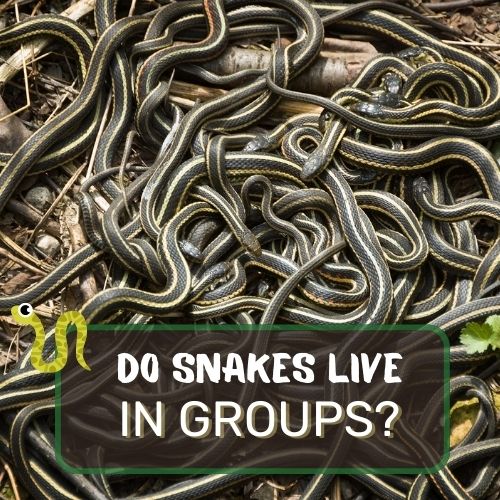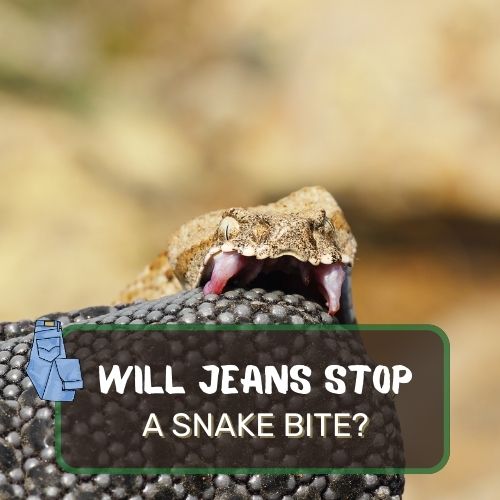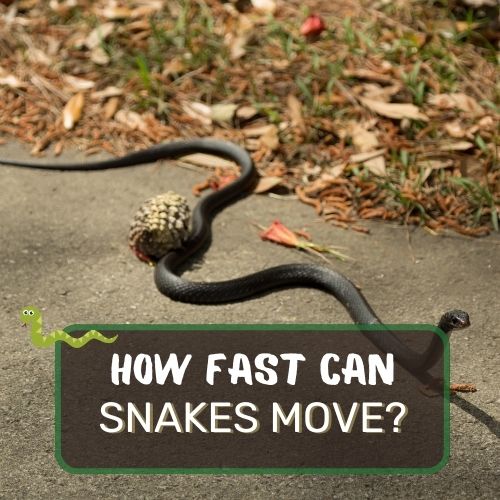
Discover the intriguing world of snake behavior as we explore the question, “Do snakes live in groups?”
This article delves into the unique social tendencies of these fascinating reptiles, shedding light on when and why they might exhibit temporary group behavior.
Through a comparative analysis of various snake species, we uncover the specific instances in which snakes gather in aggregations, such as during mating seasons and hibernation periods.
Additionally, we discuss the environmental factors that influence these behaviors and their significance for conservation efforts.
Join us on this journey to understand the intricacies of snake group behavior and gain valuable insights into these enigmatic creatures.
Table of Contents
- 1 Do Snakes Live In Groups? Short Answer
- 2 Overview of Snake Behavior
- 3 Snakes’ Mating Season
- 4 Snake Hibernation Behavior
- 5 Examples of Group Behavior in Snakes
- 6 Factors Influencing Snake Group Behavior
- 7 Differences in Group Behavior among Snake Species
- 8 The Role of Snake Group Behavior in Conservation
- 9 FAQ
- 10 Conclusion
Do Snakes Live In Groups? Short Answer
No, snakes are generally solitary creatures and do not live in permanent groups or communities. Most snake species prefer to live and hunt alone, relying on their instincts and abilities for survival. Unlike social animals like meerkats or ants, snakes do not exhibit complex social behaviors or form long-term social bonds.
However, there are certain instances where snakes may temporarily gather in groups on land or in trees for specific purposes. During the mating season, some snake species may come together in “mating aggregations” or “mating balls.”
Multiple males may compete for the attention of a receptive female during these gatherings.
Similarly, in colder regions, snakes may hibernate together in groups during the winter months. These hibernation aggregations allow snakes to conserve energy and benefit from shared body heat in order to withstand the cold.
Despite these temporary instances of group behavior, the majority of snakes are solitary hunters. They rely on stealth, camouflage, and specialized hunting techniques to catch their prey and survive in their respective habitats.
Overall, while snakes may occasionally come together for specific purposes, their natural inclination is to lead a solitary existence.
Overview of Snake Behavior

Solitary nature of snakes
Snakes are fascinating creatures with unique behaviors that have captured the curiosity of humans for centuries. When it comes to their living habits, snakes are generally known for their solitary nature.
Unlike some animals that form close-knit social groups, snakes prefer to lead more independent lives. This solitary behavior is evident in various snake species across the globe.
In the vast expanse of the wilderness, you won’t often spot a gathering of snakes like you would with birds flocking together or meerkats huddling in clans. Instead, snakes tend to live and hunt on their own, relying solely on their instincts and cunning to survive.
This solitary lifestyle can be attributed to their unique physiological and ecological adaptations.
For example, many snake species are ambush predators, relying on stealth and surprise to catch their prey.
Staying solitary allows them to maximize their chances of catching unsuspecting meals without having to share resources or face potential conflicts within a group.
While snakes may not exhibit typical social behaviors, they do communicate in their own fascinating ways.
They utilize a combination of body language, chemical cues, and vocalizations to convey their intentions and emotions. For instance, some snake species use intricate mating dances, displaying vibrant colors and patterns to attract potential mates.
Snakes also leave chemical trails using their tongues and specialized glands to mark their territories and signal their presence to other snakes. Through these communication methods, they can establish boundaries and avoid unnecessary confrontations.
Snakes’ Mating Season

The mating season is a crucial phase in a snake’s life, typically occurring once a year and varying among different species. This period is heavily influenced by factors such as temperature, daylight hours, and food availability.
As the environment becomes more favorable, male snakes become more active and venture out in search of potential mates.
Temporary grouping of snakes during mating season
During the mating season, you might witness a temporary phenomenon of snake groups, also known as “mating aggregations.” This gathering of snakes is not to be confused with a social group; rather, it’s more like a temporary meeting spot for potential mates to find each other.
Males may compete for the attention of females, engaging in unique courtship rituals and displays. While this behavior might appear social in nature, it’s important to remember that once the mating season is over, the snakes will part ways and return to their solitary lives.
Snake Hibernation Behavior

What is snake hibernation?
As the seasons change and temperatures drop, some snake species exhibit a fascinating behavior known as hibernation.
Hibernation, also referred to as brumation in reptiles, is a survival strategy that allows snakes to conserve energy during the cold winter months when food becomes scarce.
During hibernation, snakes enter a state of dormancy, where their metabolic rate decreases significantly, and they become less active.
Snakes seek out sheltered locations like burrows, rock crevices, or abandoned animal dens to hibernate. They may gather in these chosen spots, forming loose aggregations, providing a brief glimpse of group behavior in an otherwise solitary existence.
Occasional group hibernation behavior in snakes
Though hibernation is typically a solitary activity for most snake species, there are occasional observations of group hibernation in certain snakes.
This phenomenon is more commonly reported in areas with colder climates and a scarcity of suitable hibernation sites.
In such cases, multiple snakes of the same or different species may share hibernation sites to conserve body heat and increase their chances of survival.
These aggregations are not driven by social bonds but rather by the common need for warmth and protection during the winter.
Examples of Group Behavior in Snakes

Specific snake species that exhibit group behavior
While group behavior is not the norm for most snake species, some notable exceptions do exhibit fascinating communal tendencies.
One such example is the garter snake (Thamnophis sirtalis), found in various regions of North and Central America.
During the mating season, male garter snakes engage in impressive group mating rituals, forming “mating balls” where multiple males compete for a single female.
Another remarkable example is the red-sided garter snake (Thamnophis sirtalis parietalis), which gathers in large numbers during the spring migration to breeding sites in Manitoba, Canada.
These snakes gather in such vast numbers that they form massive mating aggregations, sometimes consisting of tens of thousands of individuals.
Group behavior observed in these species
In the case of the garter snakes, the “mating balls” are a sight to behold. Multiple males surround a receptive female, creating a writhing mass of serpents vying for her attention.
The competition is fierce, with the strongest and most persistent male eventually mating with the female. Once the mating season ends, the snakes disperse and return to their solitary habits.
The red-sided garter snake’s spring migration is equally awe-inspiring. As the temperatures warm, these snakes emerge from their hibernation sites and travel together to reach their breeding grounds.
The migration, sometimes spanning several kilometers, is a remarkable display of group behavior in snakes.
Factors Influencing Snake Group Behavior

Environmental factors that may influence snake grouping
Snake group behavior can be influenced by various environmental factors. One significant factor is the availability of suitable habitats.
In areas with limited resources and shelter, snakes may be more likely to gather in groups, as competition for prime locations intensifies.
Temperature and climate also play a crucial role. In colder regions, snakes might hibernate together in groups to benefit from shared body heat.
Conversely, in hot and arid environments, snakes may seek refuge in shaded areas or burrows, leading to occasional aggregations.
Impact of prey availability on snake group behavior
The abundance of prey can profoundly impact snake group behavior. In areas where food is scarce, snakes might congregate in places where there is a higher chance of finding prey.
These temporary aggregations facilitate a higher rate of successful hunting.
On the other hand, when food is plentiful, snakes may become more territorial and spread out to reduce competition for resources.
The dynamics of prey availability can influence the frequency and extent of group behavior in snakes, emphasizing their adaptability to changing environmental conditions.
Differences in Group Behavior among Snake Species

Comparison of group behavior in different snake species
Group behavior in snakes can vary significantly among different species. As mentioned earlier, some species, like the garter snakes, display more pronounced group tendencies during mating seasons.
Others, like certain vipers or boas, might show occasional aggregations during hibernation or favorable conditions.
Certain arboreal snake species, like tree pythons or green tree snakes, may gather in groups when specific fruit-bearing trees attract multiple individuals seeking sustenance.
These unique behaviors demonstrate the diverse strategies snakes have evolved to thrive in their respective environments.
Factors that contribute to variations in group behavior
The variations in group behavior among snake species can be attributed to several factors. Evolutionary history and ecological niche play a significant role.
Snakes that have evolved in environments with ample resources and minimal predation pressure may exhibit less group behavior since they can meet their needs individually.
Habitat fragmentation and human activities can also impact snake group behavior. Deforestation or urbanization might disrupt traditional hibernation or mating sites, leading to changes in aggregation patterns.
Furthermore, genetic factors and social structure within species can also influence group behavior.
While some snake species may have genetic predispositions to exhibit more social tendencies, others may not have developed such inclinations due to their evolutionary path.
In summary, the group behavior observed in snakes is a complex interplay of environmental, ecological, and genetic factors.
By studying these behaviors, we gain valuable insights into the intricate ways in which snakes adapt and interact within their ecosystems.
The Role of Snake Group Behavior in Conservation

Potential implications of snake group behavior for conservation efforts
Snake group behavior can have significant implications for conservation efforts aimed at protecting these elusive creatures and their habitats.
Understanding when and why snakes exhibit group behavior can aid in targeted conservation strategies.
For instance, identifying critical hibernation sites where snakes gather in groups during the winter can help prioritize the protection of these areas.
Preserving such sites ensures that snakes can survive the cold months and continue contributing to ecosystem balance.
Furthermore, knowledge of mating aggregations can aid in implementing measures to safeguard these areas during mating seasons.
Preventing human disturbances in these locations can reduce stress on the snakes and improve their chances of successful reproduction.
Importance of understanding snake group behavior for habitat management
A comprehensive understanding of snake group behavior is essential for effective habitat management. Conservationists and land managers can utilize this knowledge to create and maintain suitable habitats for snakes.
Conserving areas with diverse microhabitats, such as rock crevices, burrows, and fallen logs, can encourage snake populations to thrive.
Ensuring connectivity between different habitats allows snakes to move freely and find suitable sites for hibernation and mating.
Moreover, managing prey populations can indirectly influence snake group behavior.
Supporting healthy ecosystems with abundant prey species can reduce competition among snakes, potentially leading to more dispersed patterns of behavior.
FAQ
What is a bunch of snakes called?
A bunch of snakes is commonly referred to as a “den,” “nest,” or “bed.” However, it’s important to note that snakes are predominantly solitary animals, and sightings of large groups are relatively rare. When they do gather, it is usually for specific purposes, such as hibernation or mating.
Do snakes have communities?
Unlike some social animals, snakes do not form permanent communities or societies. They are primarily solitary creatures, each one focusing on its individual survival and reproductive goals. However, certain snake species may exhibit temporary groupings during specific life stages, such as mating aggregations or hibernation.
Do snakes sleep in groups?
While snakes do not sleep in the same way mammals do, they may occasionally hibernate together in groups during the colder months. Hibernation serves as a survival strategy to conserve energy when food is scarce. During this time, snakes enter a state of dormancy, and some species may choose to share hibernation sites to benefit from the collective warmth of the group.
Conclusion
In this article, we delved into the intriguing world of snake group behavior, shedding light on the usually solitary lives of these fascinating creatures.
We explored how snakes exhibit unique social tendencies during specific phases of their lives, particularly during the mating season and hibernation periods.
While most snakes are solitary hunters, they come together temporarily to achieve reproductive success and conserve energy during harsh environmental conditions.
We compared various snake species that exhibit group behavior, from the mesmerizing “mating balls” of garter snakes to the astonishing mass migrations of red-sided garter snakes.
Additionally, we discussed the factors influencing snake group behavior, including environmental conditions, prey availability, and genetic predispositions.
Final thoughts on the significance of snake group behavior and avenues for future research
Understanding snake group behavior holds significant importance for conservation efforts and habitat management. Identifying critical hibernation and mating sites can aid in protecting these areas and ensuring the survival of snake populations.




0 Comments